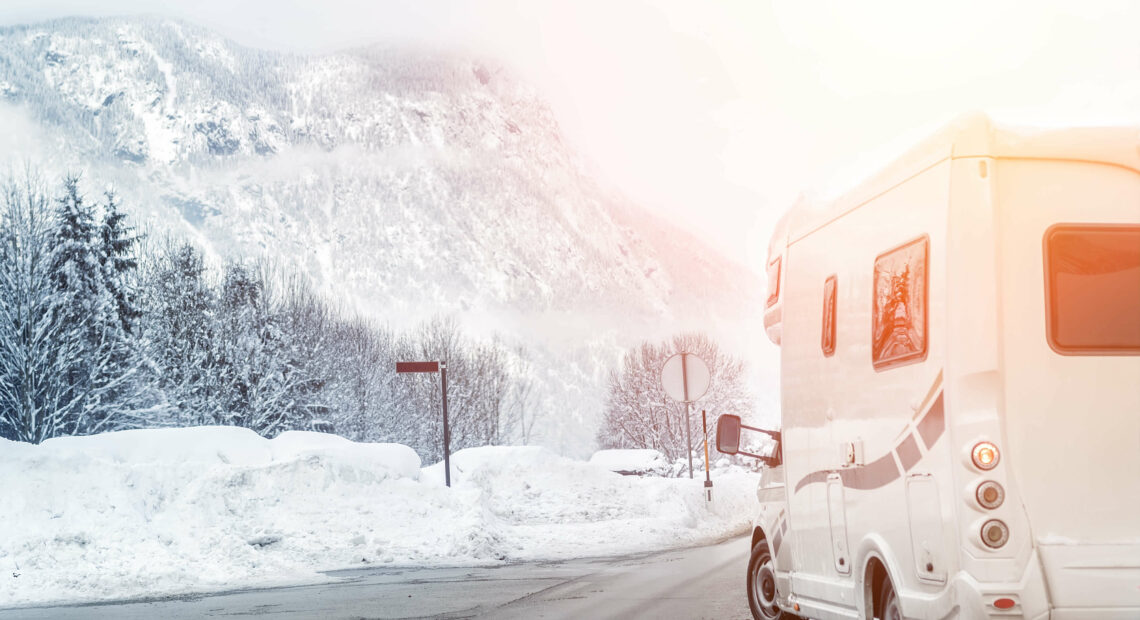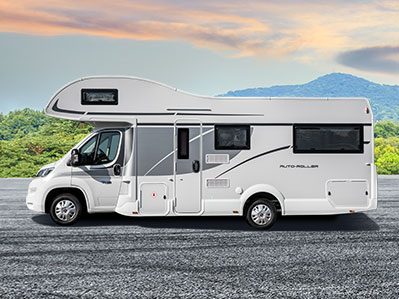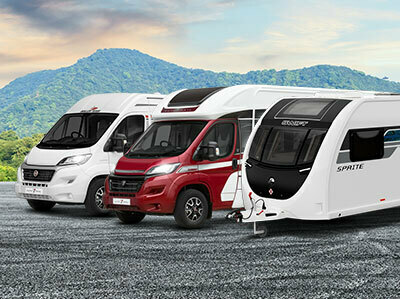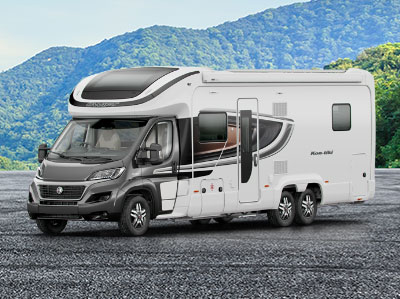There comes a time each year when it dawns on you that a certain moment has arrived. It’s time to take your new motorhome off the road and into storage. We are talking, of course, about the winter. The season when conditions are too cold, occasionally too treacherous, to be out there enjoying yourself in a vehicle of this kind. With that being the case, you might think it’s straightforward ‘til spring. Just park up and put away your dreams for a few months, then go back out there and fire up the ignition and away you go.
The thing is, it’s not that simple.
At Threeways we sell new motorhomes and used motorhomes, putting our experience in the industry to good use by making sure that you always get the best deal. We’re also always available to those who require information about any aspect of motorhoming, and we can always offer a few tips. So, in this edition of our blog, we’re looking at the things you can and should do during winter (or as it approaches) to ensure your new motorhome stays safe and secure throughout the season, and is more-or-less ready to climb into and drive straight away come spring. There are steps to go through to keep the outside and inside of the vehicle in great shape, and the whole process actually has a name: winterisation. In a moment we’ll talk about the steps you can take for keeping the exterior and interior of your motorhome in best condition.
First, the steps you can take to tighten up the actual security of your vehicle during the period it is going to be off the road.
1. Parking
If you have the space and layout, park your motorhome so that it cannot be seen from the road. Try to create a barrier of some kind which would make towing the motorhome away much too difficult for potential thieves - park up against a wall or fence and park nose first, for example.
2. Security light
If you are parking at your home (or other property) and have a security light fitted which lights up due to movement, that is going to provide you with a deterrent against potential thieves. However, the downside is that the local cats prowling your street may set if off at night and it may annoy neighbours!
3. Locks and alarms
Physical security devices you would use in your car can also come in useful in both used and new motorhomes. Steering wheel lock bars, gear stick locks and wheel clamps for example. If you have electronic security - an alarm or motorhome tracking device – at all times you should ensure that the power source running it / them has enough charge.
Practical steps to winterise the exterior of your new motorhomes
1. Tyres
Just parking up and leaving your motorhome in the same place and position all winter is not going to help your tyres. It could even mean that they become slightly less round due to a large amount of weight bearing down on one spot. Once every week or couple of weeks, just move the vehicle forwards or backwards a couple of feet, so that over the course of the winter each portion of tyre gets the same treatment, and everything equals out. Doing this will also ensure the tyres retain a bit of flexibility during a cold season when they traditionally lose some.
2. Cleaning
It’s important, before you ‘pack it up’ for the winter, that you give the exterior of your motorhome a good clean. This will ensure that any waste deposits left on it by birds. Won’t harden and spoil the paintwork. You should not just give the walls a clean, but also awnings, wheels, windscreen, windows, doors skylights, seals etc.
3. Covers
If you can put a protective cover over your vehicle during winterisation then you should, as long as the material it is mate from is not abrasive and therefore won’t damage paintwork (tarpaulins aren’t a suitable cover to use). It’s possible that there is a specific cover available for your model of motorhome. If you can’t put a cover over, then your motorhome will benefit from a wax polish which will offer it protection from UV rays as well as further dirt.
4. Vents and Seals
Use silicon grease to reduce the chances of deterioration in seals. A finger-smear should be sufficient. Don’t use petroleum-based products or engine oil, as these may corrode the rubber.
Practical steps for winterising the interior of your caravan include the following
1. Cleaning
Clean the walls and surfaces (doors, lockers, cupboards, interior of cupboards, windows, tables etc), not just in the social areas and the bedroom but also in the kitchen and bathroom.
2. Tidy up
Remove all perishables (in fact all food) from the fridge and kitchen cupboards. Thoroughly clean the fridge and cupboards out to make sure there are no crumbs, as these attract insects and rodents. Leave the fridge ajar, and open other cupboards to keep decent airflow throughout the interior.
3. Systems
Make sure that you drain down the water system, as water freezes during winter. This change in state means expansion in your pipes, leading to potential damage: cracks, splits and ruptures, etc. Water leaking out into your new motorhome is to be avoided at all costs as, if left undetected, it could cause serious damage. Clean water holding tanks and pipework, drain everything completely, leave vented through the winter. Drain the shower, empty the toilet and put plugs in drains.
4. Gas
Isolate gas bottles to protect against leaks and related hazards over the winter. If necessary remove them from the vehicle and place in appropriate storage location.
5. Clear items
It’s particularly important to take anything of value out of the motorhome – jewellery, electronics, sentimental value items. In addition, more ‘domestic’ stuff should be considered. Remove bedding as this is a trap for moisture. Take the bed sheets etc out of the vehicle and wash them, and then store them in your house until they are required again (probably in the spring). Remove electronic items – TV, radio etc, as any moisture in the motorhome through the winter could cause internal damage to components and circuitry. It is possible to leave things such as crockery, cutlery and pots and pans but it’s advisable to clean them first!
It's important to keep your motorhome safe, secure and spick and span over the winter period. You will certainly feel the benefit when it comes to firing her up again and getting out on the road in the spring. First of all the vehicle will be where you left it, and secondly you won’t have quite as many ‘issues’ to deal with. Of course, bringing your new motorhome out of the winterisation process does involve certain things – a bit of maintenance, perhaps even another clean down, and the reinstallation of the bits and pieces you removed before winter – but if you follow the steps we’ve described in this blog you should be ‘good to go’ in no time!




